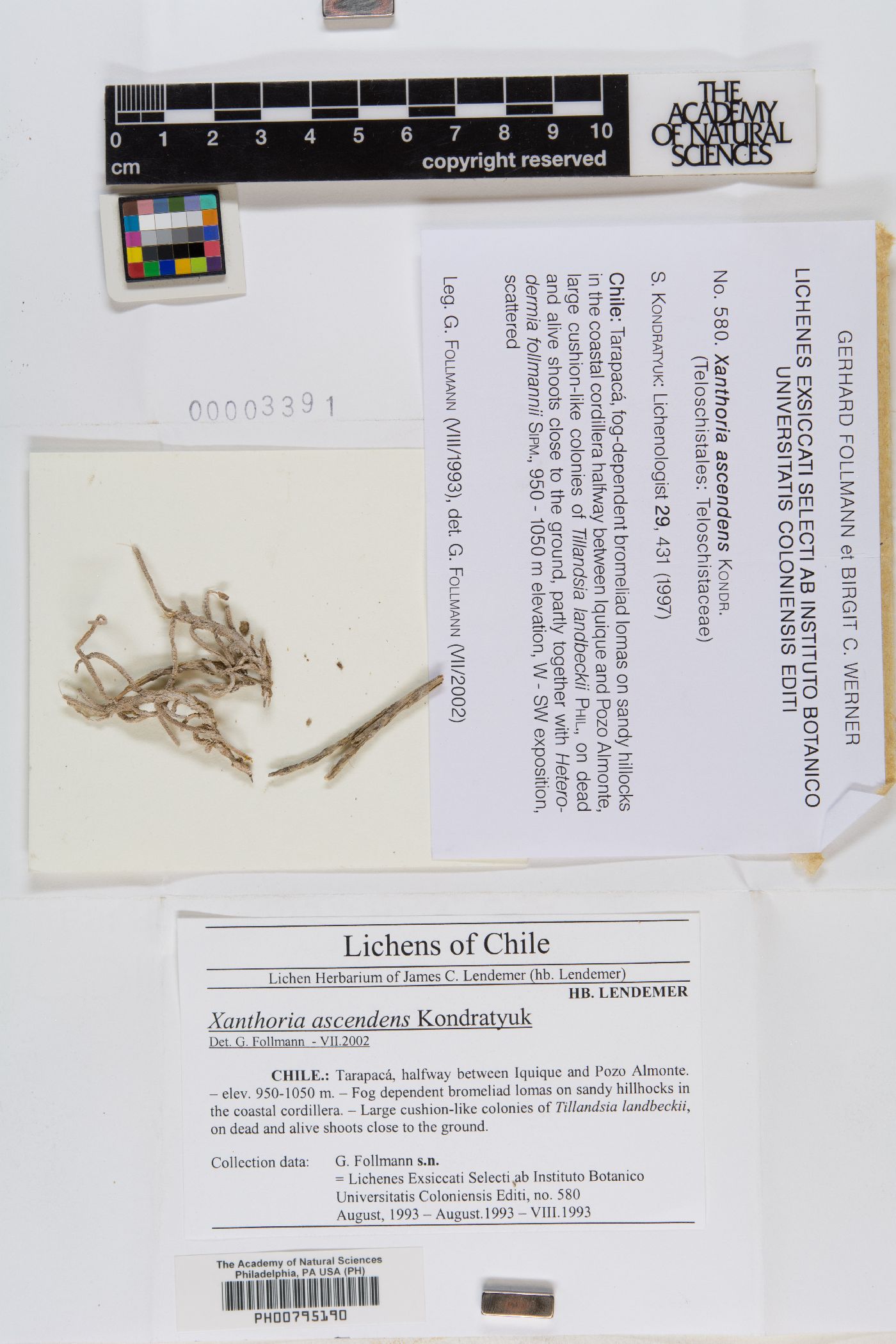
Consortium of Lichen Herbaria
- building a Global Consortium of Bryophytes and Lichens as keystones of cryptobiotic communities -
- Home
- Search
- Images
- Species Checklists
- US States: O-Z >
- US National Parks
- Central America
- South America
- US National Parks
- Southern Subpolar Region
|
|
|
|
Family: Teloschistaceae
[Xanthoria ascendens S.Y. Kondr.] |
Nash, T.H., Ryan, B.D., Gries, C., Bungartz, F., (eds.) 2004. Lichen Flora of the Greater Sonoran Desert Region. Vol 2. Thallus: foliose, forming small thalli or more often extensive colonies, loosely adnate to ascending, lobate lobes: dorsiventral, flattened to convex, 0.4-1 mm wide; margins: often ±involute; tips: 0.2-0.6(-1) mm wide, truncate, often helmet-shaped upper surface: mostly light orange to dark orange, smooth and shiny, with or without white pruina soredia: granular, blastidious, submarginal under lobe tips on lower surface medulla: white, reticulate, with short hyphae lower surface: white to yellow, smooth Apothecia: rare, laminal, stipitate, up to 2 mm in diam.; margin: smooth; disc: orange; epihymenium: brown, c. 5 µm thick; hymenium: hyaline below, 50-70 µm tall; hypothecium: hyaline to pale brown, 25-80 µm thick; paraphyses: simple or branched, cylindrical, septate asci: clavate, 8-spored ascospores: ellipsoid, polarilocular, hyaline, 12-15 x 5-8 µm; septum: 3-6 µm wide Pycnidia: rare to common, immersed to protruding, darker than upper surface conidia: ellipsoid, 2-3 x 1-12 µm Spot tests: upper surface K+ purple, C-, KC-, P- Secondary metabolites: parietin (major), fallacinal (major), emodin, teloschistin (major) and parietinic acid. Habitat and ecology: on bark or detritus, sun exposed, in dry microclimates World distribution: North America, South America Sonoran distribution: Channel Islands (San Miguel Island and West Anacapa Island), and Baja California. Notes: Xanthoria ascendens is reported here for the first time from North America. It is separated from X. candelaria by its helmet-shaped or hooded lobe ends, with powdery soredia (not blastidia). Xanthoria pollinarioides mostly has narrower lobes, which are not as clearly dorsiventral. The lobe width in X. ascendens, however, is rather variable. The shape of the soralia also separate the two species. One taxon in the genus Xanthomendoza, X. "galericulata", also possess helmet-shaped lobe tips. That species is separated from X. ascendens by having darker orange color, and wider lobes, as well as the bacilliform conidia and long rhizines typical of the genus Xanthomendoza. The taxonomy and distribution area of X. ascendens in North America need further investigation. The holotype (herb. S) was not available for study. |
Powered by Symbiota













